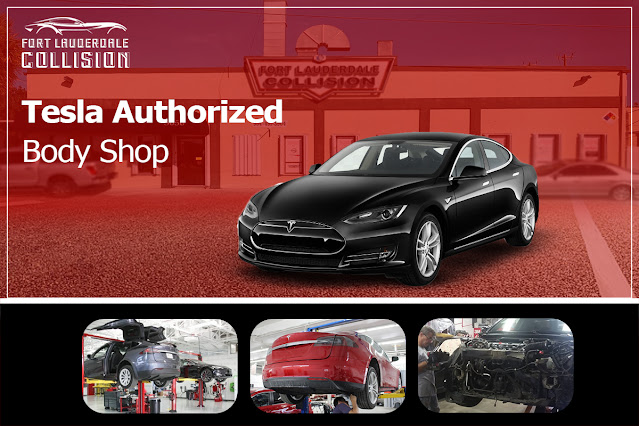Painting of a Tesla is different for body shops because of the particular difficulties that it involves. The high-voltage battery and components being electric, require extra caution. Also, the bodies of Tesla cars are made of more aluminum than steel and require different products than steel, for example, for preparation and paint. Here is an overview of the Tesla painting process in a body shop. Here is an overview of the painting process in a Tesla authorized body shop Florida.
Preparation
The first step is to completely remove the panels that need to be painted which are broken. This could be stripping down the car by taking out the trim pieces, lights, and glass. Panels are either washed and sanded to remove paint, rust, or any damage and so that the paint sticks to a flat surface. Zones are shut off and marked with tape and masking to protect parts of the object that are not subjected to the paint. Some shops mount Tesla cars on car lifts that safely keep the vehicle in the air while allowing access from underneath as needed.
Priming
When the prep is finished, filler is applied to dents and imperfections, if necessary, and block sanded until surfaces are smooth. An epoxy primer specifically designed for corrosion resistance is applied to all bare metal surfaces coated with this material. Flexible plastic filler may also be used in the edge and corner. The primer is chemically etched into the metal for complete adhesion of the color coats. Many coats are applied for maximum coverage and are allowed to dry thoroughly in the Tesla authorized body shop Miami.
Paint
When priming is done, the painting process begins. Paint mixing systems provide a precision match to the vehicle's original factory color code. The paint is activated and strained before being loaded into the paint gun. Paint is applied in 2 or 3 coats, allowing proper flash times between coats. The painter uses careful overlapping strokes and maintains the proper spray distance and angle for smooth coverage. Strict cleanliness protocols are followed to prevent contaminants in the paint. The paint is allowed to fully cure before being wet sanded and buffed out to a high gloss finish.
Special care
Special care and protocols are followed when painting areas like aluminum hoods and liftgates which are more flexible. Plastic flex agents are added to prevent paint cracking. Plastic trim pieces require compatible flexible paint. And safety measures are taken around high-voltage components and wiring to avoid electrical hazards and damage.
Inspection
Once the new paint has fully cured, the panels are reinstalled on the vehicle. The color is checked for an exact match across all body panels under direct sunlight. Paint mil thickness gauges verify the proper application. Any minor imperfections are addressed. The painted finish is given a final polish by hand or machine to restore a deep glossy shine.
The Tesla painting process requires some additional steps and special considerations compared to painting standard steel-bodied cars. Proper protocols and paint products are key to achieving an accurate color match and long-lasting, factory-quality finish on repaired aluminum panels. With attention to detail, a body shop can make a repainted Tesla look as good as new.





No comments:
Post a Comment